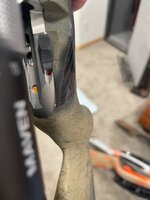Saturday a few of my guns sat out in the dust and wind for around 10 hours. One of them, using a poorly designed mountain tactical magazine with side cuts in it, allowed for a significant amount of dust and dirt to enter the chamber area. The gun of course still functioned as it should other than the bolt binding more than usual on a timed drill, but I figured it was a good opportunity to "clean" a few guns.
Usually every few hundred rounds or so I like to pull the bolts on my guns, clean the accessible areas of the action, clean the bolts, remove tape and clean barrel crown/threads on unsuppressed guns, wipe stocks and scopes down, gently clean the glass on the scopes, and re-oil my bolts.
Nothing ever goes goes down the barrel of the gun, not so much as a patch, unless something catastrophic has happened, debris has entered the barrel that can't be cleaned out by banging it out, or a barrel stops shooting well/starts stumbling, etc.
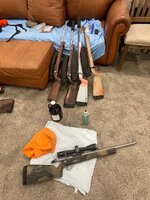
Remove bolt. Soak a rag or old t-shirt, something that doesn't fray or leave behind fuzz in brake clean and wipe bolt down. Ensure to remove all carbon and dust/debris. You can take this time remove the firing pin and brake clean that as well, especially if you never did this from factory to remove the oil that comes in there from Sako. Over time that oil gums up or rusts up in coastal climates and can cause major malfunctions. I can make a reply here on how to remove firing pin and how to degrease by plunging it, in and out until all oil/grease is removed.
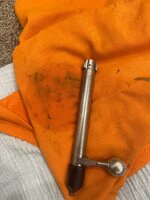
Point the barrel upwards and spray brake clean into the action. Avoid letting a ton get into the throat and leade area and none down the barrel. I use a new spot on the rag and my skinny fingers to clean that area.
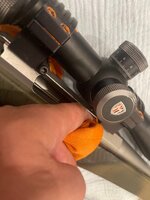
Work the safety to plunge the pin up and down and clean the entire area.

Should look nice and clean after...
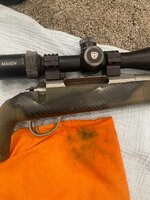
Take whatever olive or avocado oil your wife has in the kitchen to oil the bolt. Our friends up in Northern California cold press their own and send it to us. Do not use a flavored variant of the oil, you want just the natural extra virgin plain oil.
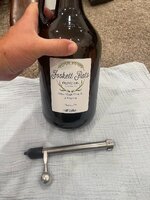
You want to LIGHTLY oil the bolt body and backs/sides of the lugs. Clean your finger and use it to apply the oil. Lots of folks will recommend grease on the back and sides of the bolt lugs ands cocking ramp where I prefer to use oil. Go ahead and let a little bit of the oil onto the cocking ramp which is just in front of the firing pin on the underside of the bolt (see notched area in bolt body).
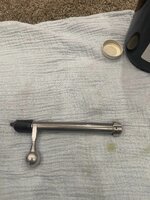
You should barely be able to tell there is oil there, a nice light even film is all.
Avoid getting any oil on or down in the firing pin and do not get any oil in the bolt face.
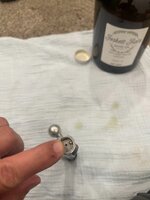
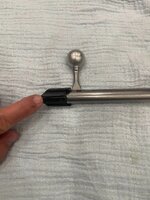
Put the bolt back in and cycle the gun a dozen or so times and rock on. It's ready for another 500-1,000 rounds before "cleaning" again.

Also... Do all of this outside not indoors. Brake clean fumes are not good to breathe.
Usually every few hundred rounds or so I like to pull the bolts on my guns, clean the accessible areas of the action, clean the bolts, remove tape and clean barrel crown/threads on unsuppressed guns, wipe stocks and scopes down, gently clean the glass on the scopes, and re-oil my bolts.
Nothing ever goes goes down the barrel of the gun, not so much as a patch, unless something catastrophic has happened, debris has entered the barrel that can't be cleaned out by banging it out, or a barrel stops shooting well/starts stumbling, etc.

Remove bolt. Soak a rag or old t-shirt, something that doesn't fray or leave behind fuzz in brake clean and wipe bolt down. Ensure to remove all carbon and dust/debris. You can take this time remove the firing pin and brake clean that as well, especially if you never did this from factory to remove the oil that comes in there from Sako. Over time that oil gums up or rusts up in coastal climates and can cause major malfunctions. I can make a reply here on how to remove firing pin and how to degrease by plunging it, in and out until all oil/grease is removed.

Point the barrel upwards and spray brake clean into the action. Avoid letting a ton get into the throat and leade area and none down the barrel. I use a new spot on the rag and my skinny fingers to clean that area.

Work the safety to plunge the pin up and down and clean the entire area.

Should look nice and clean after...

Take whatever olive or avocado oil your wife has in the kitchen to oil the bolt. Our friends up in Northern California cold press their own and send it to us. Do not use a flavored variant of the oil, you want just the natural extra virgin plain oil.

You want to LIGHTLY oil the bolt body and backs/sides of the lugs. Clean your finger and use it to apply the oil. Lots of folks will recommend grease on the back and sides of the bolt lugs ands cocking ramp where I prefer to use oil. Go ahead and let a little bit of the oil onto the cocking ramp which is just in front of the firing pin on the underside of the bolt (see notched area in bolt body).

You should barely be able to tell there is oil there, a nice light even film is all.
Avoid getting any oil on or down in the firing pin and do not get any oil in the bolt face.


Put the bolt back in and cycle the gun a dozen or so times and rock on. It's ready for another 500-1,000 rounds before "cleaning" again.

Also... Do all of this outside not indoors. Brake clean fumes are not good to breathe.


